Everything to Know About the Day of the Dead
The annual holiday, also known as Día de los Muertos, is a beloved holiday tradition that originated in Mexico
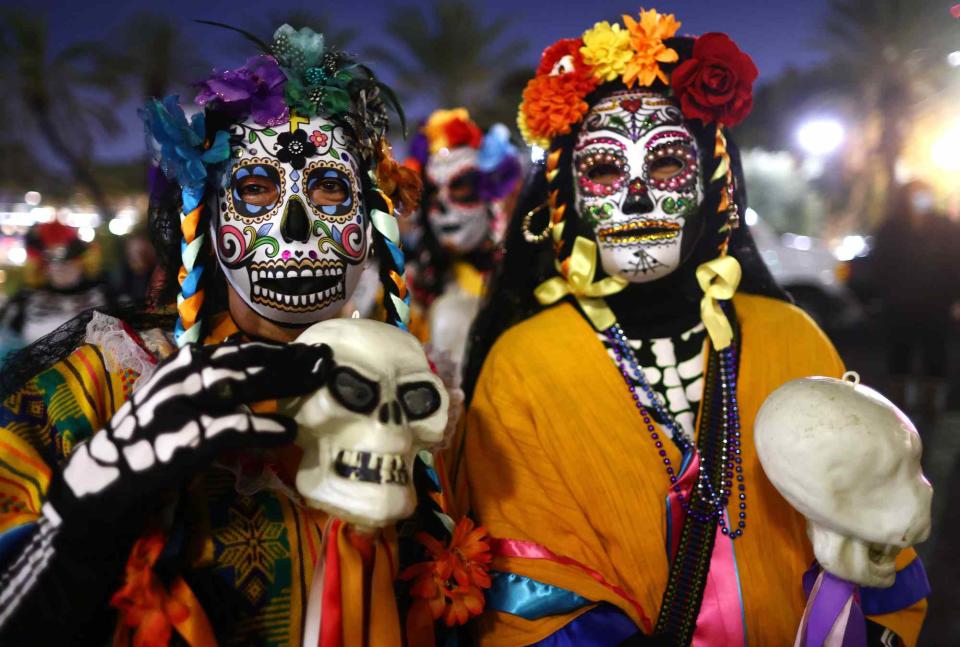
At the beginning of November each year, the Day of the Dead (also known as Día de los Muertos) takes place to remember loved ones who have died and celebrate their memory by welcoming their spirits back into the homes of relatives.
The intimate tradition combines the ancient Aztec custom of celebrating ancestors with the holiday the Spanish brought to Mexico in the early 1500s known as All Saints' Day. Rooted in Roman Catholicism, All Saints' Day is followed by All Souls' Day.
While the Day of the Dead is largely celebrated in Mexico, it is observed across Latin America as well. Furthermore, countries across the globe have adopted various traditions and customs associated with the holiday, of which some have even created their own.
Skulls are synonymous with the Day of the Dead, as they are considered one of the most popular symbols synonymous with the celebration. Typically, they are bright in color, often made out of sugar and represent the cyclical nature of life.
Between when the holiday takes place and how to celebrate, here's everything to know about the Day of the Dead.
Related: Here Are Some Ideas for Honoring Día de Los Muertos with Kids — Without Cultural Appropriation
When is the Day of the Dead celebrated?
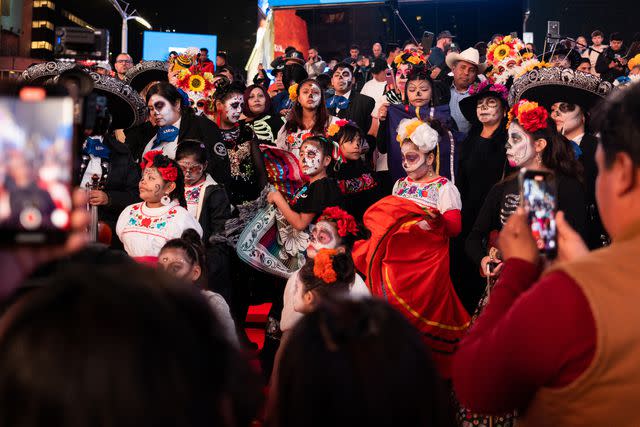
The Day of the Dead is an annual holiday that begins on Nov. 1 and ends on Nov. 2 each year. Some celebrate on Oct. 31 or Nov. 6 depending on geographical location.
The day often gets confused with Halloween since skulls are one of the Day of the Dead's most notable symbols, but the two holidays are not related.
Related: Locals Surprise Immigrant Caravan with Outdoor Screening of Disney's 'Coco' on the Day of the Dead
Where did the Day of the Dead originate?
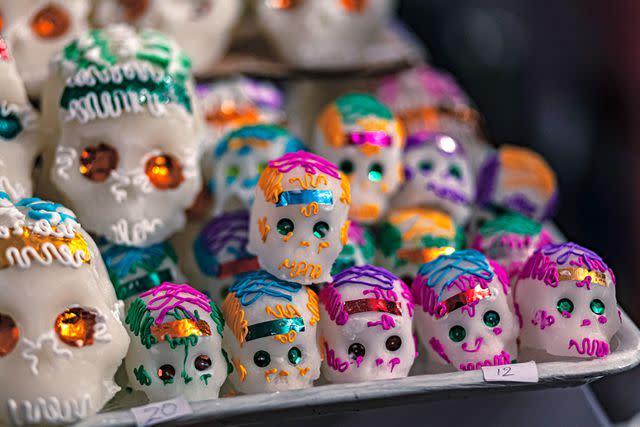
The Day of the Dead originated in Mexico but is rooted in both Aztec and Spanish beliefs and customs. When the Spanish invaded Mexico in the early 1500s, they blended Aztec practices and beliefs with their own Catholic beliefs to create their own customs, per National Geographic. The Day of the Dead is a mixture of the Aztec festival dedicated to goddess Mictecacihuatl ("Lady of the Dead") combined with Catholic influence.
In contrast, the Roman Catholics celebrate their own version of the holiday with All Saints' Day and All Souls' Day. Similarly, each respective cultural days of observance remember the dead — but while All Saints' Day honors "all the faithful departed," the Day of the Dead honors perished relatives.
Related: See Crazy Photos and Video from Mexico's First-Ever Day of the Dead Parade
What traditions are associated with the Day of the Dead?
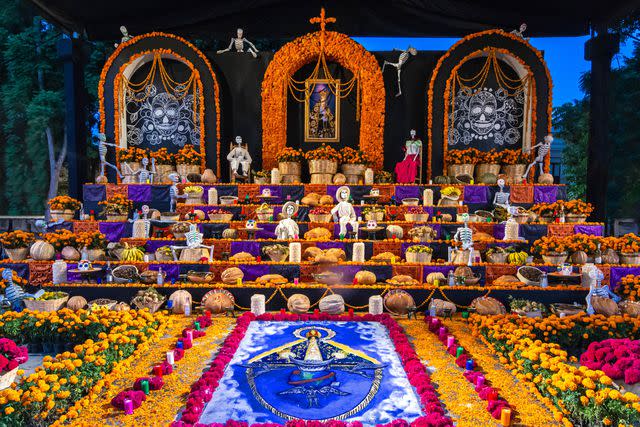
Although the holiday is largely celebrated in Mexico, Day of the Dead traditions have been adopted all over the world. While some of these customs differ depending on region, there are many common practices shared.
Since the festival takes place over the course of two days, day one welcomes the spirits of perished children followed by adults on day two. It is believed that their spirits return on the respective days, so their graves are decorated with flowers and their favorite foods to celebrate.
Ofrendas, Spanish for "offering," is an essential Day of the Dead tradition. It involves the placing of various foods and items symbolic of their ancestors as a way to remember and honor their memory. Typically, they include candles, flowers, and incense, among others.
Related: Camila Cabello Celebrates Day of the Dead and Shares Photo of Her Family's Ofrenda
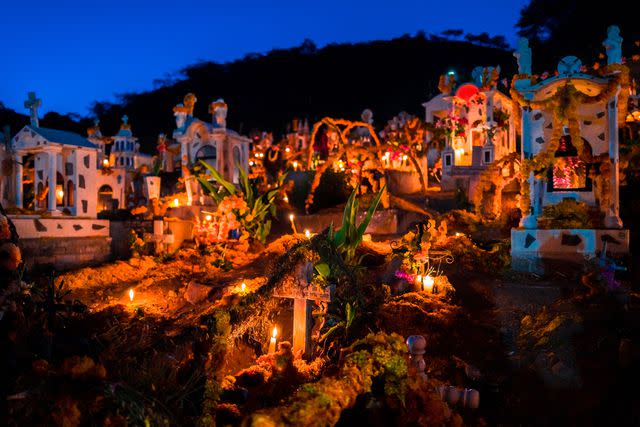
Sugar skulls are one of the most beloved symbols associated with the Day of the Dead. The colorful designs come in a variety of shapes and forms, like chocolate, face paint and tattoos. They are created and placed on alters to represent a departed loved one.
Pan de muerto, or "bread of the dead," is a popular treat baked in the days leading up to the Day of the Dead. It is shaped with crossed bones atop each individual loaf. The tasty bread is not only enjoyed by consumption but is also used as an ofrenda to enforce the belief that life is sweet and death is not meant to be feared.
Who celebrates the Day of the Dead?
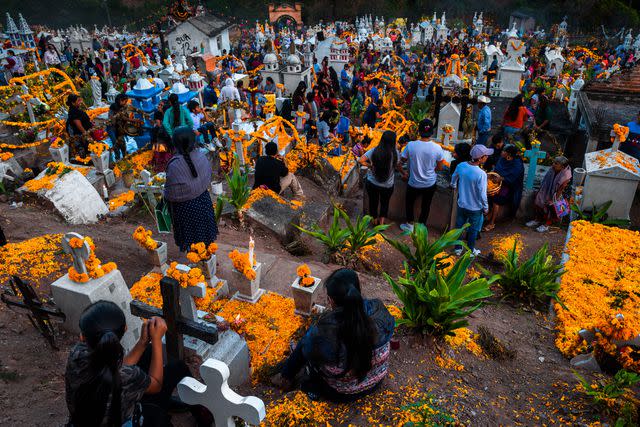
While the holiday is rooted in Mexican culture, the Day of the Dead is largely celebrated across Latin America. Furthermore, due to the elaborate traditions that accompany the holiday — in addition to Oscar-winning films that highlight its importance — the celebration has garnered attention from people all over the world, boosting tourism in Mexico as a result.
Other countries have adopted similar holidays, such as Brazil's Dia de Finados (a Brazilian iteration of the Day of the Dead) and the Philippines' All Hallows' Day (a Filipino version of All Saints' Day).
For more People news, make sure to sign up for our newsletter!
Read the original article on People.

